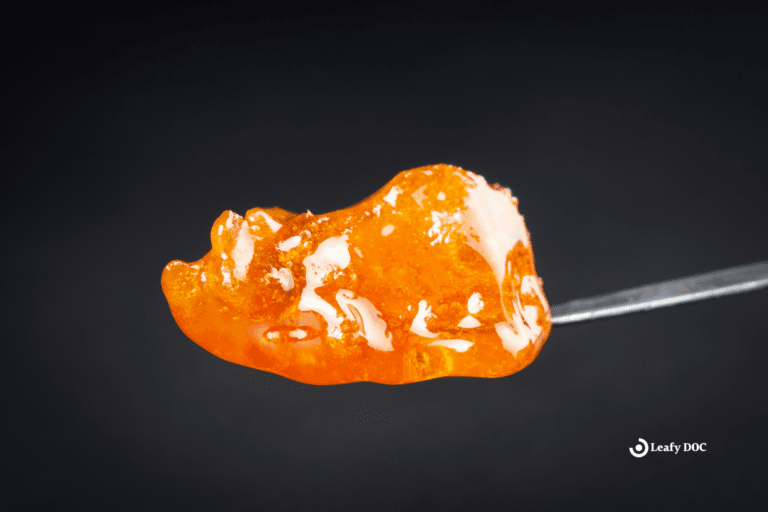Fibrous Dysplasia
Can medical cannabis help with the symptoms of Fibrous Dysplasia? Find out more below.
What is Fibrous Dysplasia?
Fibrous dysplasia is a rare bone disorder characterized by the abnormal development of fibrous tissue in place of normal bone tissue. It is a non-inherited condition caused by a sporadic genetic mutation that occurs early in fetal development. The mutation affects the cells that produce bone, leading to abnormal fibrous tissue growth and weak, brittle bones.
Fibrous dysplasia can affect any bone in the body but is most commonly found in the skull, face, ribs, and long bones of the arms and legs. It can also affect the spine, pelvis, and other bones in the body. The symptoms of fibrous dysplasia vary depending on the location and severity of the condition.
In some cases, fibrous dysplasia causes no symptoms and is discovered incidentally on X-rays or other imaging studies. In other cases, it can cause pain, deformity, and an increased risk of fractures. Rarely, fibrous dysplasia can progress to a more serious condition called McCune-Albright syndrome, leading to hormonal imbalances, skin pigmentation changes, and other complications.
What causes Fibrous Dysplasia?
Here are some of the causes of fibrous dysplasia:
- Genetic mutation: Fibrous dysplasia is caused by a sporadic genetic mutation that occurs early in fetal development. The mutation affects the cells that produce bone, leading to abnormal fibrous tissue growth and weak, brittle bones.
- Somatic mutation: In some cases, fibrous dysplasia can also be caused by a somatic mutation, which occurs in a single cell during embryonic development or later in life. This can lead to localized fibrous dysplasia in a specific bone or area of the body.
- Hormonal imbalances: Fibrous dysplasia is associated with an increased risk of hormonal imbalances, particularly in cases of McCune-Albright syndrome. Hormonal imbalances can contribute to the abnormal growth of fibrous tissue and weak, brittle bones.
- Environmental factors: Although the exact cause of fibrous dysplasia is unknown, some studies suggest that environmental factors may play a role in the development of the condition. For example, exposure to radiation or certain chemicals may increase the risk of developing fibrous dysplasia.
- Infection or inflammation: Some research suggests that infection or inflammation may trigger fibrous dysplasia in the affected bone. This can lead to the activation of bone-producing cells, contributing to the abnormal growth of fibrous tissue.
It is important to note that the exact cause of fibrous dysplasia is not fully understood, and additional research is needed to understand the complex mechanisms underlying the condition entirely.
Are there Signs & Symptoms?
- Bone pain: Fibrous dysplasia can cause bone pain, particularly in the affected bone or bones. The pain may be mild or severe and can be aching, throbbing, or sharp.
- Deformities: Fibrous dysplasia can cause bone deformities, particularly in the skull, face, and long bones of the arms and legs. The deformities may be subtle or pronounced and can affect the shape and size of the affected bone.
- Fractures: Fibrous dysplasia can increase the risk of bone fractures, particularly in areas of the bone that are weakened by the abnormal growth of fibrous tissue.
- Weakness: Fibrous dysplasia can cause weakness in the affected bone or bones, making them more susceptible to fractures and other injuries.
- Hearing loss: Fibrous dysplasia can cause hearing loss if it affects the bones in the skull or the bones that make up the middle ear.
- Vision problems: Fibrous dysplasia can cause vision problems if it affects the bones in the skull surrounding the eye sockets.
- Hormonal imbalances: In cases of McCune-Albright syndrome, fibrous dysplasia can be associated with hormonal imbalances that can cause a range of symptoms, including early onset of puberty, menstrual irregularities, and growth abnormalities.
Diagnosis & Treatment Options
Doctors may use several different tests and procedures to diagnose fibrous dysplasia. Here are some of the most common diagnostic tools:
- Physical exam: The doctor will typically begin with a physical exam to check for bone deformities, tenderness, and other signs of fibrous dysplasia.
- X-rays: X-rays are a common imaging test used to diagnose fibrous dysplasia. X-rays can show changes in bone density and shape and any fractures or deformities.
- Computed tomography (CT) scan: A CT scan can provide more detailed images of the bones and help identify the extent and severity of fibrous dysplasia.
- Magnetic resonance imaging (MRI): An MRI can provide highly detailed images of the bones and any soft tissue abnormalities associated with fibrous dysplasia.
- Bone biopsy: A bone biopsy involves taking a small sample of bone tissue for laboratory analysis. This can help confirm the diagnosis of fibrous dysplasia and rule out other conditions with similar symptoms.
Treatment of fibrous dysplasia depends on the severity of the condition and the symptoms it causes. Sometimes, no treatment is needed, and the condition is simply monitored with periodic X-rays or other imaging studies. In other cases, surgery may be needed to stabilize weak bones, correct deformities, or remove areas of abnormal tissue. Other treatments may include medications to reduce pain or prevent fractures, physical therapy, and supportive care. Most people with fibrous dysplasia can lead normal, healthy lives with appropriate treatment and management.
Can medical cannabis help?
The use of medical cannabis in treating fibrous dysplasia has not been extensively studied, and there is currently no definitive evidence to suggest that medical cannabis is an effective treatment for this condition.
That being said, medical cannabis may have potential benefits for some of the symptoms of fibrous dysplasia. For example, medical cannabis has been shown to have pain-relieving properties and may help manage bone pain associated with fibrous dysplasia. Additionally, medical cannabis may be useful in managing the anxiety and depression that sometimes accompany chronic pain.
However, it is essential to note that the use of medical cannabis should always be approached with caution and under the guidance of a healthcare professional. Medical cannabis can have side effects and interact with other medications, including those used to treat fibrous dysplasia.
Suppose you are considering medical cannabis to treat symptoms of fibrous dysplasia. In that case, it is important to discuss this with your healthcare provider to determine whether it is a safe and appropriate option for you. Your healthcare provider can also guide dosing and monitoring for potential side effects or interactions with other medications.
Last Updated: June 14, 2024
Get Your Medical Card
Connect with a licensed physician online in minutes
Table of Contents
Keep Reading
-
Find a Qualified PA Medical Marijuana Doctor Near You
Get connected with a qualified medical marijuana doctor in PA. Learn what to expect during an appointment and how to get started. Book now!
-
Exploring The Benefits Of Cannabis Tinctures For Sleep
Enhance your sleep with cannabis tinctures – unlock the secrets to better rest and improved well-being! Learn about the benefits of cannabis tinctures for sleep now. Click to discover more!
-
What Is Dabbing & How Do I Do It?
Unleash your inner dabber and elevate your smoking experience today! Learn what dabbing is and how to do it like a pro. Click here for the ultimate guide!



